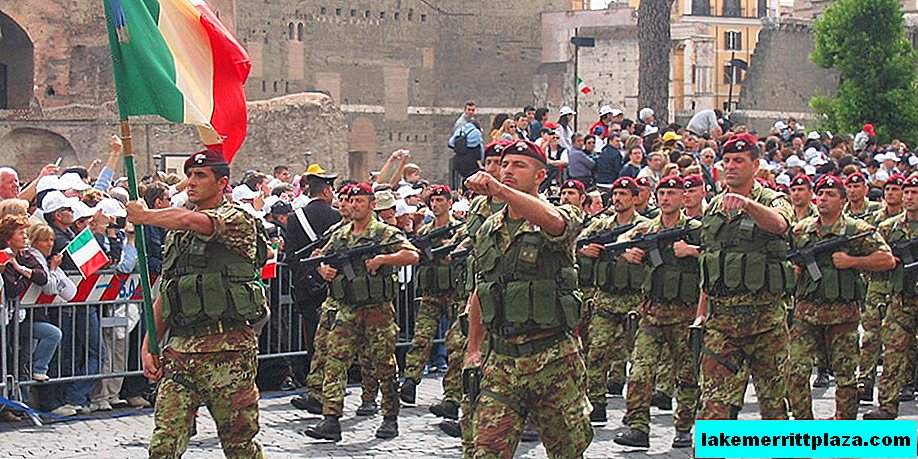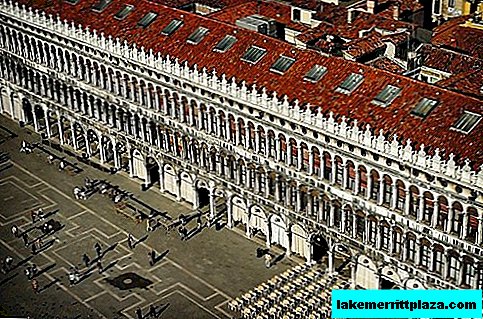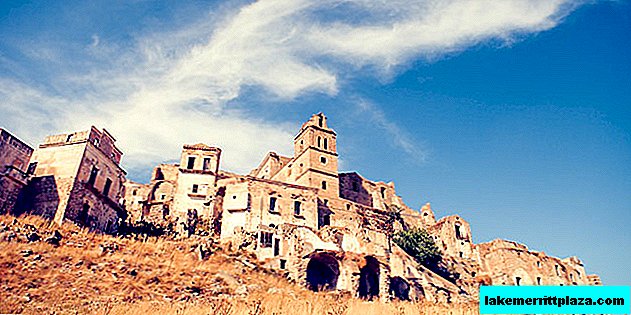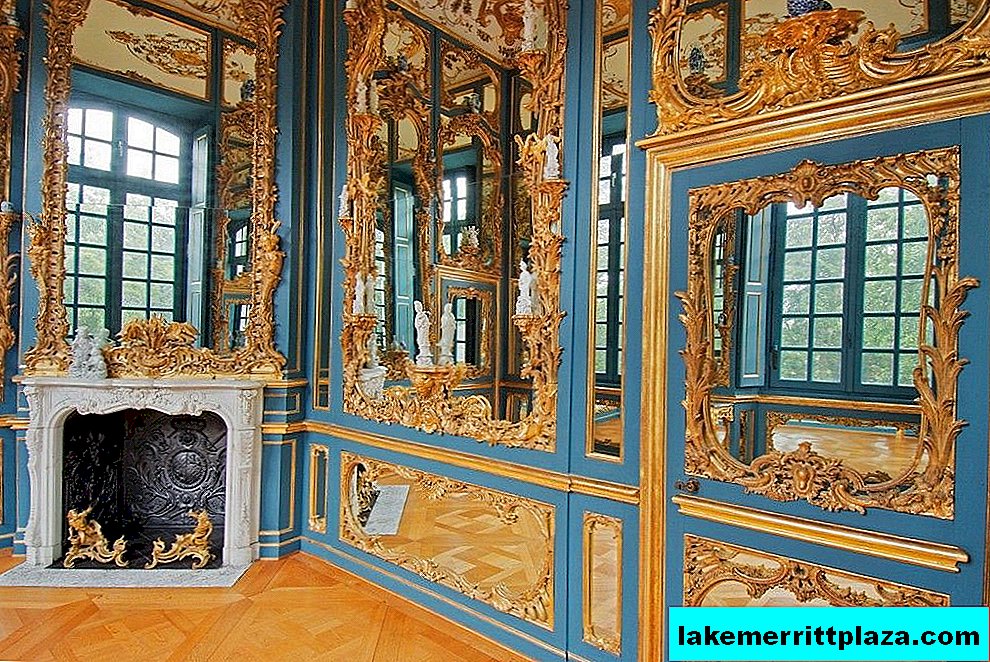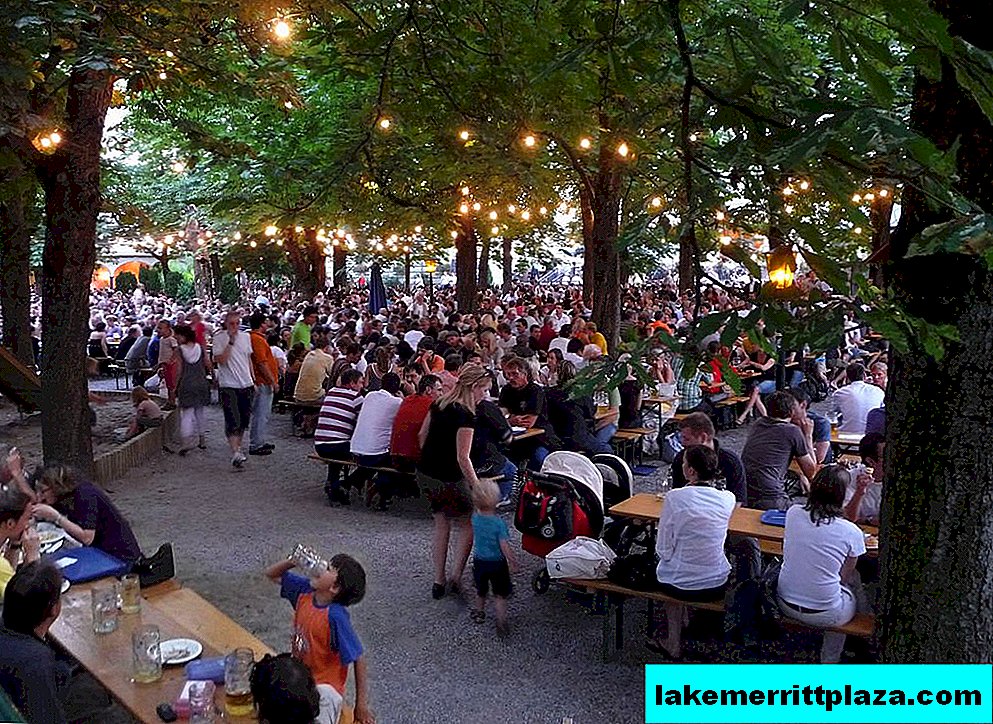Giuseppe Garibaldi (Giuseppe Garibaldi) - the national Italian hero, the legendary personality of the liberation movement Risorgimento (Risorgimento). The name of the revolutionary turned into a symbol of freedom and unity. The Italian commander was called the hero of the “two worlds”, many politicians enjoyed his fame. The fascist party of Mussolini, the party of communists, liberals equally respected the patriot Garibaldi and saw in him the founder of their ideologies.
The historical portrait of Giuseppe Garibaldi did not fade even after his death. Streets in cities of many countries were named after the Italian, monuments were erected to him, a large Italian aircraft carrier, introduced into the fleet in 1985, was named in memory of the commander.

Youth and youth
Despite the fact that Giuseppe became the national hero of Italy, he was born in Nice on July 4, 1807.

From 1792, Nice was part of France, in 1814, when Napoleon abdicated, she became part of the Italian Sardinian kingdom (Regno di Sardegna) and was there until 1860. The kingdom included the Duchy of Savoy (Duché de Savoie), the Italian region of Piedmont (Piemonte) and the island of Sardinia (Sardegna).
Family, first job
The father of the boy, Domenico Garibaldi, is a sailor from Genoa. He was the captain of a Mediterranean fishing boat - tartans, which was called "Santa Raparata" ("Santa Reparata"). In addition to trading in fish, Captain Domenico was engaged in water transportation of goods between the ports of Italy.
Giuseppe's mother was called Donna Rosa Raimondi Garibaldi. She was an educated person and wanted to see her son as a student in a seminary, so she hired Abbot Giovanni Giacone and a retired officer Arena to be his teacher. Senor Arena taught Italian, mathematics and writing, Peppino (affectionate nickname Giuseppe) loved to communicate with him the most.
Although no system was provided for in the education of the child, he always learned something new himself. Speaking Italian and French from childhood, he also knew Spanish, Greek, Latin and English, and tried to compose poems.
Giuseppe Garibaldi wasn’t particularly interested in the biography of the ancestors, in later memoirs, he mentions only his father and mother, his elder brother Angelo and his grandfather on the father's side, Angelo Garibaldi. Grandfather moved to Nice from the port city of Chiavari, located in the Liguria area in the province of Genoa (Provincia di Genova).
Giuseppe did not like that his mentors were persons involved in the clergy. He did not share his mother's expectations about his future, the boy was always drawn to the sea. At the age of 15, the young man nevertheless left to work as a young boy on a ship. Curiosity and hard work soon brought him to the position of assistant captain.
For the first time, Garibaldi made a long voyage across the sea at “Constanţa”, which visited Russia, at the Odessa port. During his youth, the young man visited almost all the shores of the Mediterranean, which greatly influenced the formation of his personality and political views. At that time, popular uprisings in port cities of the Mediterranean Sea were not uncommon, which gradually grew into a national movement and spread throughout Europe.
Political situation 20-30 years. IXX century
In 1821, a Greek uprising began against the rule of the Ottoman Empire. It was defeated, but shook the whole country, laying the foundation for the liberation movement of the Greek people. In 1828, another wave of minor uprisings took place in the southern mountains of Italy, on the coast of Cilento, which provoked new executions and repressions. At that time, it was hard for Garibaldi to stay in Nice, the atmosphere of surveillance oppressed the freedom-loving spirit, he sought to leave his homeland faster and go to other shores.

In 1832, he became captain of the Clorinda merchant sailboat and set sail on his own ship. Shortly before this, during his sea voyages, he learns about the uprisings in Bologna and Modena, about the execution of the Italian revolutionary Ciro Menotti. Then Pope Gregoire XVI seeks to strengthen his power, achieving world domination, and the Austrian troops commit more and more repression and atrocities. Garibaldi realizes that Austria and the Roman papacy do not allow Italy to unite and can no longer struggle with an inner feeling to help the homeland in difficult times.
In 1833, in one of the coastal cities of the Aegean Sea, he meets with Emile Barrault (Emile Barrault: 1800-1869), a sensimist, convicted and deported from France. Giuseppe took a new acquaintance on board and drove him to Constantinople. During the trip, the captain and the casual passenger talked a lot about injustice and inequality around the world.
On April 8, 1833, the Garibald Clorinda, transporting oranges, ended up in the Russian port. Giuseppe Garibaldi in Taganrog, when visiting one of the drinking establishments, gets acquainted with the Italian emigrant Giovanni Cuneo (Giovanni Cuneo). His performance was so moved and thrilled by the sailor that Giuseppe became a member of an underground revolutionary organization called "Young Italy" ("Giovine Italia"). He led the work of Giuseppe Mazzini (Giuseppe Mazzini), Garibaldi will meet with him a little later in Marseille (Marseille).
The beginning of revolutionary activity

- In 1834, the captain of the ship, eager for exploits, transferred to the service of the navy of the Sardinian kingdom. Garibaldi called himself Kleombrot (Kleombrot), his goal was the revolution and the preparation of the rebellion. But the conspiracy failed, the leadership revealed the secret activities of Giuseppe Garibaldi and he had to hide from harassment by the authorities. For treason, the tribunal sentenced him to death through execution.
- Since 1835, Garibaldi settles in South America and remains there for thirteen years under the pseudonym Giuseppe Pane.
- Long left without a livelihood, he was forced to wander. To somehow feed himself, the Italian enlisted in the Tunisian bay. The sea and the thirst for exploits continued to attract Giuseppe. And, not finding a more suitable job, he becomes a pirate. In the position of captain of a pirate ship, he stands in defense of the Republic of Rio - Grandi (República Rio-Grandense) from Brazilian oppressors.
- In 1840, Garibaldi left the service in Rio Grande and moved with his family to Montevideo. Attempts to organize a peaceful life were unsuccessful. Neither the work of a sales agent, nor the director's position at the school could fit the character of Giuseppe.
- In 1842, he again became a member of the liberation movement, protecting Uruguay from Argentine General Manuel de Rosas.

- In 1843, Giuseppe was appointed commander of the Legion of Italians. Thus began the formation of future Garibaldi troops.
- Having won in 1846 under San Antonio, the military leader also becomes famous in his homeland, where he is awarded the sword of glory.
- In 1847, the Italian met with Alexander Dumas, Sr., who glorified the personality of Giuseppe Garibaldi in his works.
The failure of the 1848 revolution

During the period of forced emigration, Giuseppe Garibaldi and Giuseppe Mazzini maintained contact. In 1848, thanks to changes in Italy, political prisoners had the opportunity to gain freedom and Garibaldi decides to return. The first to go to Giuseppe's mother are Anita with the children, and then the father of the family returns.
Monarch and pope power threatened
In the years 1831-34. Monarch Carlo Alberto crushed two Mazzini revolts. Fear of losing the crown forced the ruler to change policies and carry out a series of reforms, approving the constitution. Italy was close to the unity of the state. The election of Pope Pius IX (Pius IX) and allowed immigrants to again see their native land.
The new policy was to the liking of the returning son of the country, and at first he, not thinking of a revolution, wanted to fight the Austrians and defend Italy. But the pope and the monarch were afraid of decisive action and concluded a truce with Austria. Garibaldi considered them humiliating, deciding that he would fight not for the monarch, but for his nation.
In 1849, revolutionaries overthrew the Pope and proclaimed the Italian Republic. Garibaldi demanded that Mazzini introduce a dictatorship and saw this as the only possible way to defend Rome.
The French offensive in the name of the restoration of papal power required a decision. But Mazzini secretly left the city and refused to fight. July 3, 1849 the French occupied Rome. The king abdicated and departed for Portugal.
The new king. New hopes
Garibaldi decided not to give up. The Roman Republic fell, but loyal volunteers remained, with whom he went north. In Venice, they hoped to find support for their revolutionary deeds.
Approaching Piemonte, Garibaldi is arrested and again expelled from the country. He spends 5 years alone, his children live in Nice with his grandmother. After wandering around Morocco and Gibraltar, in 1850 Giuseppe settled in North America.
In New York, the Italian takes a job as a worker at a candle factory owned by his friend Meucci, then goes back to sea on a merchant ship as captain. He has visited China, New Zealand, Australia, South America.
In the meantime, an underground movement for the freedom of the nation continues under the leadership of Mazzini at home. Revolutionary sentiment declined and performances yielded no results.

In 1854, Garibaldi again came to Italy. Victor Emmanuel II (Vittorio Emanuele II) became King of Piedmont and Giuseppe was ready to take the oath if the monarch continued the struggle for the unity of the country. But the peace with the king could not be maintained.
In 1858, another wave of the liberation movement swept Italy. Piedmont's Prime Minister Camillo Benso Cavour (Camillo Benso Cavour) was preparing for war with Austria. He hoped to recover Italy's previously lost territories. Then, a treaty was secretly concluded with Napoleon III, according to which Nice and Savoy (Savoie) retreated to France, and the monarch supported the war with the Austrians.
The beginning of the unification of Italy
The Piedmontese government managed to persuade Garibaldi to head the corps of alpine shooters. Under the leadership of a national hero, the squad defeated the Austrian forces in Lombardy. Emperor of Austria Franz Joseph I (Franz Joseph I) was unable to resist the unification of the forces of France and Piedmont and invited France to Lombardy in return for the cessation of hostilities.
Napoleon III returned Italy to Milan and Lombardy, but in return took Nice and Savoy.
Campaign "thousands"
In 1860, a new wave of popular unrest swept the south of Italy. Starting in Sicily, they spread throughout the Kingdom of Naples. After much deliberation, Garibaldi led a volunteer campaign of 1,200 people to southern Italy. The ruling monarch was sent a letter telling about the intentions of the seizure of territories for the benefit of the unification of the state. Victor Emmanuel II did not interfere with this.
At night, from May 5 to 6, 1860, two Garibaldi ships set sail for the shores of Sicily. On May 11, he proclaimed himself the dictator of the island. Sicily passed to the commander, but he did not transfer it to the monarch, having begun to carry out his reforms there for the people.

On September 7, 1860, Naples was captured and the establishment of a dictatorship was again proclaimed. In the battle on the Volturno River with Garibaldi there were more than thirty thousand soldiers. Successful actions of the invaders liberated the territory of the south from the domination of the Bourbons (Bourbon). In November, the territories were transferred to Victor Emmanuel II, and Garibaldi lost the opportunity to rule Naples. The monarch saw him as a dangerous competitor and rival.
Campaign to Rome
Garibaldi, indignant at such betrayal by the government that had given Nice, expresses his readiness to go to Rome. The monarch, not wanting to quarrel with France, whose garrisons guarded the pope, prevents the decisive actions of the people's commander. He resigns and settles on the Sardinian island of Caprera (Caprera), where he acquires land for agricultural purposes. Soon the whole island belonged to him alone.
Rome and Venice continued to remain outside of Italy and this bothered the commander. The role of Giuseppe Garibaldi in the unification of the homeland was not completed.

In 1862, the monarch suggested that the national hero again lead the army and oppose the Austrians in the Balkans. But instead of the planned war, Garibaldi turned all his power to the papal territories. This was not part of the king’s plans and he brutally rebuffed the naughty subject, putting up an Italian army against the rebel.
Near Mount Aspromonte, Garibaldi was severely wounded in the leg, after which he began to limp.
The annexation of Venice and Rome
In 1866, the commander again fought with the army of the Austrians, but already on secondary fronts. While the main forces were defeated, he achieved victories. After concluding an armistice with Austria, Venice was returned to Italy.
In 1867, Garibaldi made another attempt to return Rome. He began to travel around the cities and call on the people to revolt. But overt calls to go to the papal lands led to the fact that Giuseppe was arrested.
However, he escaped from under the convoy and, collecting seven thousand volunteers, again went to Rome. The local population did not support the rebels and some of them fled. Garibaldi was again defeated by the French general Failly at Mentana.
Only in 1870 the French left Rome, in connection with the outbreak of war with Prussia. Italian troops occupied Rome and annexed it to Italy. Garibaldi, as unnecessary, was exiled to his island.
The last days
In 1870, the French, after the fall of the monarchy, invited Garibaldi to lead a voluntary national detachment of the movement against the Prussian army. France was defeated, but the Italian commander continued to love and even offered him to become a deputy. Giuseppe did not need this, he refused the offer and returned to his home.

The last years of Garibaldi's life passed on the island of Caprera. He conducted agriculture, corresponded with many bright personalities (A. Herzenim, V. Hugo, J. Mazzini and others), wrote books:
- In 1863, the collection Autobiographical Poem (Poema autobiografico) was completed;
- "Memoirs" ("Memorie autobiografiche", 1872);
- The novel "A Thousand from Marsala" ("I mille di Marsalla", 1874), telling about military campaigns, expectations and results.
In addition, he wrote two works of art: "Clelia, or the Government of the priests" ("Clelia. Il governo del monaco", 1870. In Russia, the book was published under the title "The Monk's Yoke, or Rome in the 19th Century") and "Cantoni Volunteer "(" Cantoni il volontario ", 1870). He also left behind a political testament.
Giuseppe suffered numerous unbearable pains. He was tormented by rheumatism and arthritis, only at the end of his life he agreed to receive a pension from the Italian government. The national hero died on June 2, 1882. His grave was the island of Caprera.
Family

During the military attack on the Laguna (Laguna) in 1839, Garibaldi meets a young girl D'Aninas Ribeiro da Silva (D'Aninas Ribeiro da Silva), whom he falls in love with without memory. Anita (Anita) reciprocates, although at that time she is a married woman.
In October 1839, Anita leaves her legal spouse and sets foot on the schooner Rio Parda, companion Garibaldi. From this day on, she supports him in all wars and battles, worthily enduring the hardships and deprivation of life of exiles.
Victories and defeats follow Garibaldi one after another. During one of the retreats, Anita, already bearing their son, walked with arms in hand next to her beloved husband through the forest. In 1840, their first-born Menotti was born, who had to be wrapped in his father’s shawl. One and a half weeks after giving birth, enemy soldiers found a young mother with a baby and they had to flee on horseback. The girl was holding a newborn baby in front of her in the saddle. Subsequently, Anita gave birth to three more children: in 1843, her daughter Rosita (Rosita), in 1845, her daughter Teresita (Teresita), in 1847, her son Ricotti.
In 1849, while moving to Venice, unable to withstand physical exertion, the pregnant Anita dies of malaria in her husband’s arms near Ravenna. Unable to bury his beloved, he continues to move on.
In 1860, the second wedding of Garibaldi took place. He met with Giuseppina Raimondi, but left the girl on her wedding day, learning about her pregnancy from another man. The marriage was recognized invalid only in 1879.
In 1864, the commander visited England. The historical characteristic of Giuseppe Garibaldi describes him both as an active patriot-revolutionary and as a great female lover. In England, his fans were Emma Roberte, Countess from Italy Maria Della Torre, twenty-two-year-old journalist (friend and biographer) Jessie White Mario (Jessie White Mario). But with any of them a serious relationship did not work out.
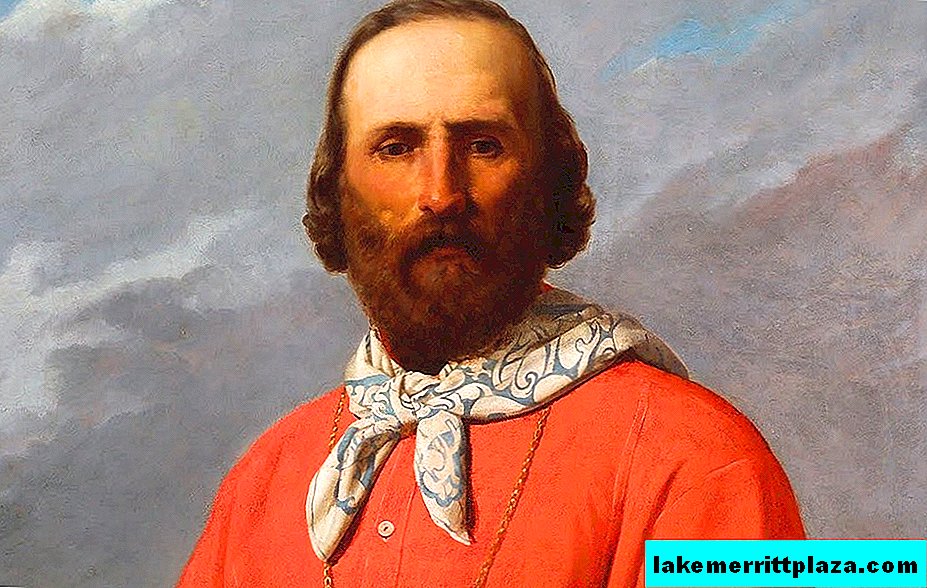
Garibaldi liked one writer, the wife of a banker, Maria Esperanza von Schwartz, and he proposed to her as his wife, but she refused.
Aware of his political situation, the commander began to spend time on the purchased island. There lived the nurse of his granddaughter - Francesca Armosino (Francesca Armosino), who first became his civilian, then his legal wife. In 1867, a peasant woman gave birth to his daughter Clelia, followed by another girl, Rósa, who died in infancy. In 1873, the son of Manlio was born.
In memory of Giuseppe Garibaldi
A man with blonde hair of medium height (about 170 cm), a straight nose, a high forehead and brown eyes could not even imagine that he would leave such a bright mark in world history.

- In 1870, Place Garibaldi appeared in Nice, on which a sculpture was installed of the famous native of the city. The monument to Giuseppe Garibaldi was designed by sculptor Antoine Étex by another sculptor, Jean-Baptiste Deloye. The figure of the commander stands on a high pedestal in the center of the fountain in full growth, leaning on a sword. On the sides of it are two lions.
- In 1885, in the Upper Town of the Italian Bergamo (Bergamo) at the site of the dismantled fountain in the Old Square (Piazza Vecchia) a full-length Garibaldi monument was erected. At the beginning of the twentieth century, he was transferred to the Lower City on the Rotonda dei Mille square.

- In 1893, a monument to Giuseppe Garibaldi on a horse was erected in Genova (Genova) on Piazza De Ferrari. The statue is made of bronze by the sculptor Augusto Rivalta (Augusto Rivalta).
- In 1895, the sculptor Emilio Gallori (Emilio Gallori) completed work on the sculpture of Giuseppe Garibaldi on horseback. The monument was erected on a high pedestal in Piazzale Garibaldi in Rome. The square is located on the highest hill in Rome - Mons Janiculus and is one of the best viewing platforms in the city - there are always a lot of locals and lovers. A little lower on the hill there is a monument to Anita Garibaldi, his first wife. The woman is depicted in the saddle and with the baby in her arms.

- In 1895, another Garibaldi monument was erected in Milan, on Piazza Cairoli. The author of the sculpture was Ettore Ximenes (Ettore Ximenes), he performed it in bronze. The commander is depicted riding a horse, and on either side of him are Freedom, with a sword in its scabbard and the Revolution with a lion.
- In honor of the memory of the heroic deeds in Italy in 1899, the armored cruiser Giuseppe Garibaldi was built.
- In 1900, a monument to Garibaldi was unveiled in Bologna, on Independence Square (Via Independenza). The bronze statue is the work of the sculptor Arnoldo Zocchi. The Italian is depicted sitting in the saddle.
- In 1985, the aircraft carrier Giuseppe Garibaldi was launched.
- In 1961, in Taganrog, near the port, the city administration erected a 5.5-meter-long stele dedicated to the memory of Garibaldi with its bas-relief. The original version was made of brick, and in 1990 a new stele was already cast from Bronze. In 2007, the bas-relief was replaced by a bust. Today it is the only Garibaldi monument in Russia.

- But the most beautiful monument is the sculpture in Venice, set in the Castello area, next to the public gardens. It was created by the sculptor Augusto Benvenutty (Augusto Benvenutty) in 1885. The figure of Garibaldi is located directly on the rock, under it is his follower and lion.
Interesting Facts

- In 1862, Giuseppe Garibaldi was cured of injury by a Russian doctor N.I. Pirogov. He visually discovered where the bullet stuck in the commander’s leg and pulled it out.
- As an 8-year-old child, he rushed into a forest stream to save a woman who rinsed her clothes there and accidentally fell.
- Garibaldi admitted that when he was in danger, he represented the image of a mother kneeling before the Savior and reading prayers. This always saved him from bullets.
- The commander had three wives and five children. Despite a large family, he died alone. The widow and all the children of Garibaldi received from Italy ten thousand lire for life.
- The red color of the clothes of revolutionaries was not invented by the Bolsheviks, but by Garibaldi. He wore red shirts during the Uruguayan war.
- The partisan detachments of Italy of World War II called themselves the followers of Garibaldi and put the name of the commander on their banners.
- Before his death, an Italian soldier who had fought all his life suddenly declared himself a pacifist.
- In 2012, the descendants of the great commander turned to the Italian authorities for permission to open the grave of Giuseppe. For some reason they were inclined to believe that the tomb may be empty.
- During a visit to London in 1864, he met with A.I. Herzen there.
- Two sons from Anita subsequently became part of the Italian Chamber of Deputies, and his daughter got married to General Canzio.
- Monuments and monuments to the national hero are installed in almost all cities of Italy.

